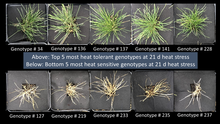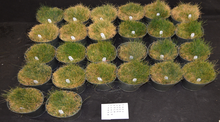Genotypic variation in heat tolerance for hard fescues
By Cathryn Chapman, Ryan Daddio, Henry Qu, and Bingru Huang; Rutgers University
Hard fescues are often utilized for their low input maintenance requirements, but are susceptible to heat stress. With annual temperatures rising, there is both a demand for more heat-tolerant hard fescue turfgrasses and a demand for effective strategies for assessing phenotypic traits to select or screen for heat-tolerant genotypes in hard fescue.


